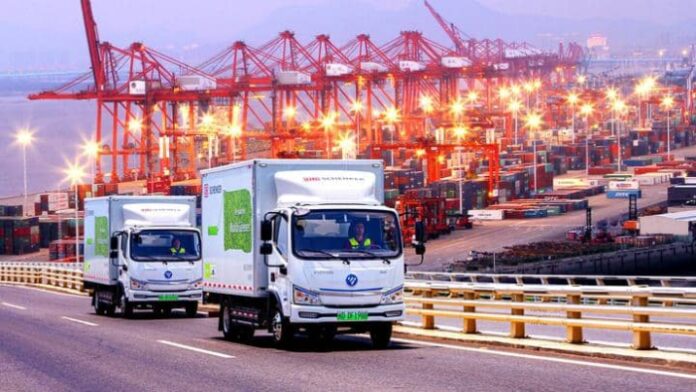
-
Supply chain disruptions due to China’s COVID-19 strategy and geopolitical tensions are depriving ASEAN economies of US$17 billion a year in lost business revenue, TMX Global says
-
A separate report says larger ASEAN economies’ supply chains were hit harder by the pandemic’s impact than their smaller peers
-
TMX Global says despite being hit hard by the pandemic and subsequent supply chain disruptions, ASEAN is in a bright spot amid the global gloom
Supply chain chaos costs the Association of Southeast Asian Nations US$17 billion annually in lost business revenue due to volatility from China’s COVID-19 strategy and geopolitical tensions elsewhere, an analysis by business transformation consultancy TMX Global says.
Separately, a study by the Economic Research Institute for ASEAN and East Asia (ERIA) says larger ASEAN economies felt the pandemic’s impact on their supply chains harder than their smaller peers.
Dean Jones, TMX Global’s managing director for Asia, said the group comprising 10 Southeast Asian nations together had a GDP of US$3.62 trillion in 2022, making up 3.62% of global GDP.
The supply chain chaos costs ASEAN businesses an estimated $17 billion a year in lost sales, an average of 0.47% of business revenue globally, Jones said.
ERIA, meanwhile, found that Singapore, Malaysia, and Thailand suffered greater negative supply and demand shocks to their supply chains during the pandemic than the region’s smaller economies like Brunei and Myanmar.
ERIA said industries that were hurt most by reduced sales were the retail and wholesale sectors.
RELATED READ: The impact of China’s reopening on supply chains
TMX Global analysis, nonetheless, is upbeat on ASEAN’s situation. Jones said that despite being hit hard by the pandemic and subsequent disruptions, he believes the region is in a bright spot amid the gloomy global outlook.
Jones said ASEAN’s positive trajectory is improving, thanks to domestic demand that supported the region’s rebound in the first half of 2022 and sustained its reputation as the world economy’s fastest-growing region.
Driven by both exports and domestic demand, ASEAN’s GDP is forecast to more than quadruple over the next two decades to $13.3 trillion by 2040.
“China’s reopening in December has been a welcome move for global brands that are still manufacturing out of Asia, as it signals further easing from global supply chain pressures,” Jones said.
“However, the disruptions experienced in the last few years, and most notably the greater part of 2022, have set in motion a greater consideration of ASEAN’s role when anticipating future volatilities in the global supply chain landscape.”
RELATED READ: Maritime supply chains need boost – UNCTAD
Jones said businesses are thus continuing their transition into a “China Plus One” strategy, diversifying certain aspects of their operations such as production centers and warehouses outside China.
“As part of this, we are seeing countries like Malaysia, India, Thailand, and Vietnam being the top choices by businesses to set up shop as part of their renewed supply chain strategies. As a result, countries in the region are now seeing new opportunities to become global centers of manufacturing and shipping,” Jones said.
“While all these put the region at an advantage, it also means that businesses in the region should all the more not let their guard down when it comes to ensuring supply chain resilience.”
Jones notes that ASEAN’s strengths only go as far, unless the region addresses key gaps that would ensure its supply chains are future-proof, while navigating the region’s diversity.
“ASEAN cannot afford to rest on the laurels of its geographic, regulatory, economic, and demographic advantages if it wants to continue the fast track to lead on global trade. Supply chains thrive on predictability, and so the ability to take away as much of the uncertainty as possible through a resilient supply chain is crucial,” he said.
In terms of key considerations for businesses’ supply chain strategy, Jones said these are:
- Process, where operations are optimised and geared towards fast-changing customer preferences;
- Technology, leveraging digitalisation and emerging innovations to enable these necessary business transformations; and
- People, where logistics workforce now needs to upskill and transform to serve a reinvented supply chain.
“Now is the best time for businesses to start putting into practice some of the key lessons learnt during the last few years from supply chain disruptions. Using the valuable insights gathered from these key events, the team at TMX is looking forward to work with businesses in the region to optimise their supply chains and business operations,” Jones said.




